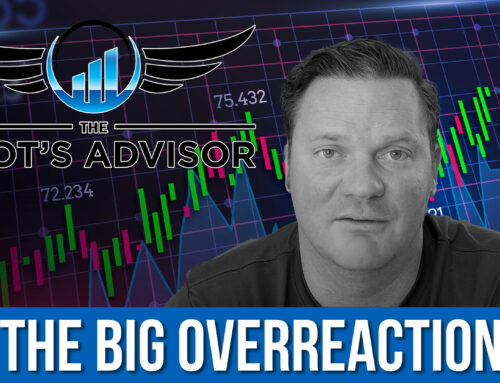SPECIAL QUARTERLY UPDATE: STOCKS POST STRONG GAINS IN Q1
The first quarter of 2017 is now behind us, and although we won’t have complete economic data for a while, we do know that domestic stocks had a solid start to the year. Last week, major indexes took a pause from some recent gains and began the second quarter of 2017 with less than thrilling performance. The S&P 500 lost 0.30%, the Dow was down 0.03%, the NASDAQ gave back 0.57%, and the MSCI EAFE declined 0.72%.[1] For this week’s update, we’re going to examine what happened to markets in the first quarter.
How did markets perform in Q1?
All three major domestic indexes posted sizable gains in the first three months of 2017:[2]
- S&P 500 up 5.5%
- Dow up 4.6%
- NASDAQ up 9.8%
As we mentioned last week, the NASDAQ’s nearly double-digit growth represented its best quarter since 2013.[3]
However, the majority of the markets’ gains happened in January and February.[4] While the NASDAQ increased 1.48% in March, the S&P 500 stayed flat and the Dow lost 0.72% in the same period.[5]
Which stocks outperformed in Q1?
Large cap stocks – companies with more than $5 billion in market capitalization – drove much of the growth we saw last quarter.[6] Tech stocks performed especially well, gaining more than 12% over the quarter.[7] In fact, S&P Info Tech, which tracks information technology stocks in the S&P 500, was the quarter’s highest performing sector index.[8]
How did politics affect market performance in Q1?
As the new presidential administration came to power last quarter, investors closely followed policy news and headlines. We encourage you to pay more attention to economic fundamentals than media reports, but we understand that completely ignoring political conversations would have been challenging in Q1.
Overall, investor expectations for the new administration’s pro-growth policies helped push the markets to numerous record highs last quarter.[9] However, when Congress chose not to vote on the American Health Care Act, market concerns increased about whether new policy changes would actually occur.[10] The Dow lost 317 points the week of the expected – but cancelled – healthcare vote.[11]
How high was volatility in Q1?
Even though policy debates have seemed to heighten the emotional landscape this year, the VIX measure of volatility recorded its lowest Q1 average ever.[12] The 11.69 level is also the second lowest quarterly average since 1990.[13]
What might be on the horizon?
Earnings season is upon us, and investors will be watching to see whether reports match expectations. According to FactSet, the S&P 500’s estimated earnings growth rate for Q1 2017 is 8.9% – which would be its best year-over-year earnings growth since 2013.[14] Only a handful of S&P 500 companies have reported their earnings so far; of these reports, 57% exceeded the mean sales estimate and 74% exceeded the mean earnings-per-share estimate.[15]
In addition to earnings, the Federal Reserve’s interest-rate decisions will be on many people’s minds throughout 2017. After raising rates on March 15, the Fed expects at least two more increases this year.[16] So far, the markets absorbed these increases well, with the Dow even gaining 100 points on the Fed’s last meeting day.[17]
Ultimately, we have many data points, policy updates, and economic indicators to focus on in the coming months. As of now, 2017 has started with strong market performance, high consumer confidence, and low volatility.[18]
ECONOMIC CALENDAR
Tuesday: JOLTS
Wednesday: Import and Export Prices, EIA Petroleum Status Report
Thursday: PPI-FD, Consumer Sentiment
Friday: Consumer Price Index, Retail Sales, Business Inventories

Notes: All index returns exclude reinvested dividends, and the 5-year and 10-year returns are annualized. Sources: Yahoo! Finance, S&P Dow Jones Indices and Treasury.gov. International performance is represented by the MSCI EAFE Index. Past performance is no guarantee of future results. Indices are unmanaged and cannot be invested into directly.
These are the views of Platinum Advisor Marketing Strategies, LLC, and not necessarily those of the named representative, Broker dealer or Investment Advisor, and should not be construed as investment advice. Neither the named representative nor the named Broker dealer or Investment Advisor gives tax or legal advice. All information is believed to be from reliable sources; however, we make no representation as to its completeness or accuracy. Please consult your financial advisor for further information.
Diversification does not guarantee profit nor is it guaranteed to protect assets.
International investing involves special risks such as currency fluctuation and political instability and may not be suitable for all investors.
The Standard & Poor’s 500 (S&P 500) is an unmanaged group of securities considered to be representative of the stock market in general.
The Dow Jones Industrial Average is a price-weighted average of 30 significant stocks traded on the New York Stock Exchange and the NASDAQ. The DJIA was invented by Charles Dow back in 1896.
The Nasdaq Composite is an index of the common stocks and similar securities listed on the NASDAQ stock market and is considered a broad indicator of the performance of stocks of technology companies and growth companies.
The MSCI EAFE Index was created by Morgan Stanley Capital International (MSCI) that serves as a benchmark of the performance in major international equity markets as represented by 21 major MSCI indices from Europe, Australia and Southeast Asia.
The S&P/Case-Shiller Home Price Indices are the leading measures of U.S. residential real estate prices, tracking changes in the value of residential real estate. The index is made up of measures of real estate prices in 20 cities and weighted to produce the index.
The 10-year Treasury Note represents debt owed by the United States Treasury to the public. Since the U.S. Government is seen as a risk-free borrower, investors use the 10-year Treasury Note as a benchmark for the long-term bond market.
Opinions expressed are subject to change without notice and are not intended as investment advice or to predict future performance.
Past performance does not guarantee future results.
You cannot invest directly in an index.
Consult your financial professional before making any investment decision.
Fixed income investments are subject to various risks including changes in interest rates, credit quality, inflation risk, market valuations, prepayments, corporate events, tax ramifications and other factors.
By clicking on these links, you will leave our server, as they are located on another server. We have not independently verified the information available through this link. The link is provided to you as a matter of interest. Please click on the links below to leave and proceed to the selected site.
- http://finance.yahoo.com
http://finance.yahoo.com
http://finance.yahoo.com
https://www.msci.com - http://business.nasdaq.com
- http://www.cnbc.com
- http://www.cnbc.com
- http://www.cnbc.com
http://www.cnbc.com - http://www.investopedia.com
http://business.nasdaq.com - http://www.cnbc.com
- http://business.nasdaq.com
- http://www.cnbc.com
- https://www.zacks.com
- http://business.nasdaq.com
- http://www.zerohedge.com
- http://www.zerohedge.com
- https://insight.factset.com
- https://insight.factset.com
- https://www.nytimes.com
- http://business.nasdaq.com
- http://finance.yahoo.com








